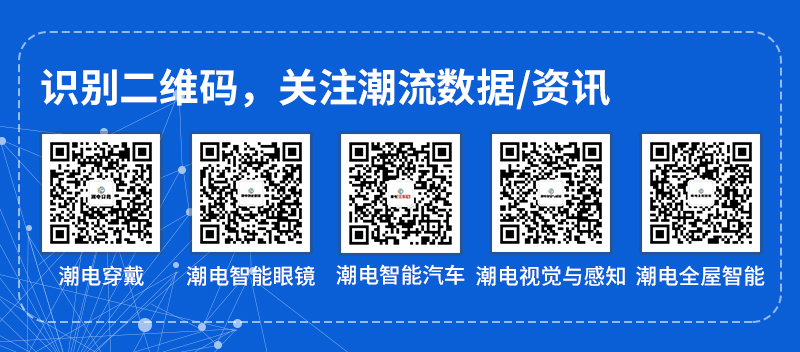以自动驾驶为驱动力,视觉算法在车载领域找到了最佳落点。
今年4月举行的上海车展上共有210款车型、1413台车辆参展,其中以智能座舱和智驾辅助为主的新能源汽车占据绝对C位,尤其是屏幕以及摄像头数量激增,让整车科技感十足。如问界M9满配版全车配备10块屏幕,理想汽车所展示的L7、L8、L9全车内外搭载了10颗以上摄像头。

不止是新能源电动系,传统燃油车也在不断引入智能化技术,通过搭载视觉感知设备与雷达配备了多种行车辅助系统,如自适应巡航、盲点监测、车道保持等功能,并同时引入了智能语音控制、视觉感知交互、远程诊断和控制、车载娱乐等功能,使得车辆更加便捷和智能化。
通过视觉算法的不断发展和优化,汽车自动驾驶系统正带来更加安全与舒适的驾乘体验,比如精准实现障碍物检测和跟踪、车道检测和跟踪、路面状况检测等功能。
在智能电动汽车和自动驾驶的新时代,曾经的视觉算法霸主Mobileye逐渐掉队,众多同类国产企业如雨后春笋冒出,纷纷欲取而代之。
根据潮电智库了解,目前终端车企更青睐于“软硬结合”的供应模式。这意味着除了传统的软件算法支持,整合上下游资源,整体系统集成是对车载视觉方案商新能力的考量。
华为、虹软、佑驾创新、瞰瞰智能科技、元橡科技、欧菲光等企业经过多年的积聚与沉淀,已经具备较强的综合竞争力。
值得注意的是,自从激光雷达登上车载舞台,与视觉算法方案的比较就不曾停止。
潮电智库认为,激光雷达和视觉算法应该是相辅相成的关系。事实上,包括造车新势力在内的中国汽车厂商几乎都采用了多传感器融合路线。
不管怎样,视觉算法在未来自动驾驶领域依然是主流的核心技术之一,其低成本、高成熟度与应用广泛性等优势无法替代。
Top 20 domestic vision algorithm solution providers in 2023
Driven by autonomous driving, visual algorithms have found the best landing point in the automotive field.
At the Shanghai Auto Show held in April this year, a total of 210 models and 1413 vehicles were exhibited, with new energy vehicles mainly featuring intelligent cabins and intelligent driving assistance occupying the absolute C-spot. Especially with the rapid increase in the number of screens and cameras, the entire vehicle has a strong sense of technology. The full version of the Wenjie M9 is equipped with 10 screens, and the L7, L8, and L9 displayed by the Ideal Car are equipped with more than 10 cameras both inside and outside the car.
Not only new energy electric vehicles, but traditional fuel vehicles are also constantly introducing intelligent technology. They are equipped with various driving assistance systems such as adaptive cruise control, blind spot monitoring, lane keeping, and other functions through visual perception devices and radar. At the same time, intelligent voice control, visual perception interaction, remote diagnosis and control, and in car entertainment are also introduced, making the vehicle more convenient and intelligent.
Through the continuous development and optimization of visual algorithms, the auto drive system is bringing a safer and more comfortable driving experience, such as accurate obstacle detection and tracking, lane detection and tracking, road condition detection and other functions.
In the new era of intelligent electric vehicles and autonomous driving, the once dominant visual algorithm, Mobileye, has gradually fallen behind, and many similar domestic enterprises have sprung up like mushrooms, eager to replace it.
According to the Electrend, terminal car companies currently prefer a supply model that combines software and hardware. This means that in addition to traditional software algorithm support, integrating upstream and downstream resources, the overall system integration is a consideration of the new capabilities of car vision solution providers.
After years of accumulation and accumulation, companies such as Huawei, Arcsoft, Minieye, KANKAN, METOAK, and Ofilm have already possessed strong comprehensive competitiveness.
It is worth noting that since the launch of LiDAR on the vehicle stage, the comparison with visual algorithm solutions has not stopped.
Electrend believes that LiDAR and visual algorithms should complement each other. In fact, almost all Chinese car manufacturers, including new car manufacturers, have adopted a multi-sensor fusion route.
Anyway, visual algorithms will still be one of the mainstream core technologies in the future field of autonomous driving, and their advantages such as low cost, high maturity, and widespread application cannot be replaced.





